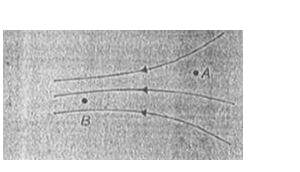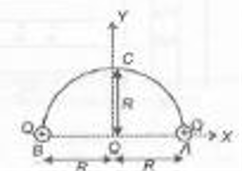12 j of work has to be done against an existion electric field to take a charge of 0.01 C from A to B. How much is th potential difference VB−VA?
The correct Answer is:400 volts
Step by step video solution for 12 j of work has to be done against an existion electric field to take a charge of 0.01 C from A to B. How much is th potential difference V_B - V_A? by Physics experts to help you in doubts & scoring excellent marks in Class 12 exams.
Updated on:21/07/2023Topper's Solved these Questions
- ELECTROSTATICSBOOK - RESONANCE ENGLISHCHAPTER - ELECTROSTATICSEXERCISE - Exercise-1 Section (D)
5 Videos
- ELECTROSTATICSBOOK - RESONANCE ENGLISHCHAPTER - ELECTROSTATICSEXERCISE - Exercise-1 Section (E)
2 Videos
- ELECTROSTATICSBOOK - RESONANCE ENGLISHCHAPTER - ELECTROSTATICSEXERCISE - Exercise-1 Section (B)
12 Videos
- ELECTROMAGNETIC INDUCTIONBOOK - RESONANCE ENGLISHCHAPTER - ELECTROMAGNETIC INDUCTIONEXERCISE - A.l.P
19 Videos
- EXPERIMENTAL PHYSICSBOOK - RESONANCE ENGLISHCHAPTER - EXPERIMENTAL PHYSICSEXERCISE - PART -II
10 Videos
Similar Questions
Find Vba, if 12J of work has to be done against an electric field to take a charge of 10−2 C from a to b.
View SolutionHow much work is done in moving a charge of 2C across two points having a potential difference of 12V ?
View SolutionIf 20J of work has to be done to move an electric charge of 4C from a point, where potential is 10V to another point, where potential is V volt, find the value of V.
View SolutionThe work done in carrying a charge of 5μC form a point A to a point B in an electric field is 10mJ. The potential difference (VB−VA) is then
View SolutionIf 50 joule of work must be done to move an electric charge of 2 C from a point, where potential is V volt, the value of V is
View SolutionIn figure two points A and B are located in a region of electric field . The potential difference VB−VA is

View SolutionWhat is the amount of work done in moving a charge of 15 between two points kept at a potentia difference of 1.2 V?
View SolutionIn moving from A to B along an electric field line, the work done by the electric field on an electron is 6.4×10−19J. If ϕ1andϕ2 are equipotential surfaces, then the potential difference VC−VA is.
 .
.
View SolutionA uniform electric field is present in the positive x - direction. If the intensity of the field is 5NC−1 then find the potential difference (VB−VA) between two points A (0 m, 2 m) and B (5 m, 3 m).
View SolutionTwo identical point charges are placed at A and B. The potential difference V0−VC is (k=14πε0)

View Solution
